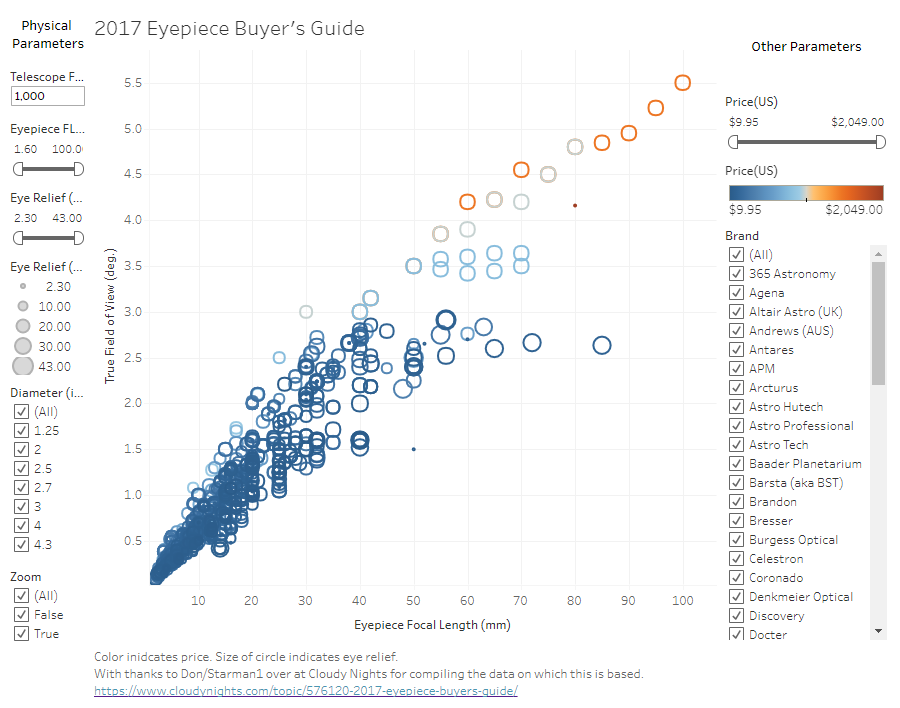A Visual Guide to Telescope Eyepieces
Not too long ago, I bought a telescope. I guess that makes me an amateur astronomer.
If you buy a camera, you are a photographer. If you buy a flute, you own a flute.
- Bob Kolbrener
So maybe I just own a telescope.
I certainly need some help when it comes to choosing things like eyepieces, so I was thrilled to come upon a very thorough list of eyepieces assembled by Starman1 (Don) over at Cloudy Nights.
But a spreadsheet is one thing—a viz is better. My take at an explorative viz is online over at Tableau Public. (I wish I could figure out how to embed something here, but all I can manage is a screenshot.)
 Go ahead and tweak the parameters to find the eyepiece you're looking for. Some details on how I built it are below the fold.
Go ahead and tweak the parameters to find the eyepiece you're looking for. Some details on how I built it are below the fold.
Build Details
Don's data are pretty clean, but I did have to massage them a bit:
- A lot of missing values were null, but some were listed as "?". I normalized them all to null so I could treat numeric values as numeric.
- There are some eyepieces available in multiple formats that I had to split up and pivot.
- There were some zoom and multi-focal-length eyepieces that I had to figure out how to handle.
All of this was straightforward to see and handle using Project Maestro. I'd recommend it even if it wasn't my baby.
I did have to make a few choices in the viz:
- My two primary axes represent the things that seem most important to me: focal length and the amount of the sky you can see. As focal length increases, the magnification decreases, and the resulting trend towards larger FoV is clear. Still, there is a wide variation depending on eyepiece construction.
- I used mark size to indicate eye relief. This is super important to me because I wear glasses; anything less than about 20mm makes it hard.
- Color indicates price; everyone cares about price.
- I had to decide how to handle zoom eyepieces. I show them as their average focal length. Full details are in the tooltip:

Suggestions for improvement are welcome. Enjoy!

